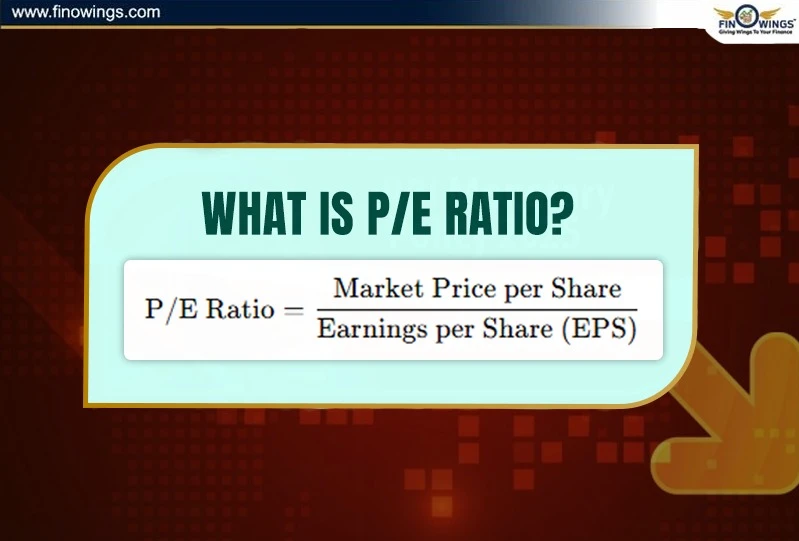Home >> Blog >> What is Falling Three Methods and How It Works
What is Falling Three Methods and How It Works
.webp)
Table of Contents
- What Is the Falling Three Methods Pattern?
- Structure of the Falling Three Methods Candlestick Pattern
- Market Psychology for Three Falling Candlestick Patterns
- Market Conditions for Falling Three Methods Patterns
- How to Trade the Falling Three Methods Pattern
- Example of the Falling Three Pattern in Action
- Limitations of the Pattern
- Best Practices for Falling Three Methods Trading
- Falling Three Methods vs Rising Three Methods
- Conclusion
Identify potential reversals and continuations in market trends using candlestick patterns. These tools in technical analysis are some of the most effective. One of the most reliable continuation patterns, though lesser known, is the Falling Three Methods.
This pattern indicates the current downtrend is likely to continue, and it's valuable to people who want to ride the momentum. In this instance, I will detail the falling three methods candle pattern in full detail, discussing its structure, the underlying market psychology, and strategies for effective trading.
What Is the Falling Three Methods Pattern?
The falling three methods candlestick pattern is a bearish continuation pattern that is formed during a downtrend. It serves to indicate the market is temporarily pausing before a continuation of the downtrend.
In this case, the price becomes bullish momentarily, only for it to be pushed lower and re-established the downtrend. After a steep price fall, a small bullish candlestick is formed followed by a small bearish candlestick. A typical example of this pattern is made of five trading candles. The first and last candles will be complete bearish candlesticks. The three middle candles will be bullish and small. They will counter the main bearish trend, and continue the downtrend.
Structure of the Falling Three Methods Candlestick Pattern
To properly identify a falling three pattern on your price chart, check the following formation:
1. First Candle – Large Bearish Candle
The pattern starts with a large bearish candlestick, indicating that sellers are in control of the market.
2. Second to Fourth – Small Bullish or Neutral Candles
The next two or three candles are small and are usually bullish (green) or neutral (doji) which represent a minor upward correction or pause within the downtrend. These candles also stay within the range (high and low) of the first bearish candle.
3. Fifth Candle – Large Bearish Candle
The last candle is again a large bearish candle that closes below the first candle closing level. This confirms that sellers have re-entered the market strongly and the downtrend is resuming.
What is mainly of interest in this falling three methods candle pattern is the fact that the middle candles do not exceed the range of the first candle. This explains the buyers’ attempts are weak in comparison to the aggressive selling.
(Source: Trade Brains)
Market Psychology for Three Falling Candlestick Patterns
To start, Falling Three Methods requires an understanding of market psychology:-
The first large red candle describes a seller dominated market where a bearish sentiment is established.
The small bullish candles depict gaining buyer enthusiasm, but minor counter-trend buying is not sufficient for trend reversals, described as temporary profit-taking.
The final large red candle illustrates bearish pressure reasserting, driving sentiment further down.
Even where temporary buyers attempt to change the market momentum. Their attempt is described as feeble, and the trend remains unchanged. The pattern reinforces bearish continuation.
Market Conditions for Falling Three Methods Patterns
Falling Three Methods candlestick patterns works best under the following conditions:-
1. In a strong downtrend
The pattern is most effective and works best when formed as a pause in a well-established bearish trend.
2. In Low Consolidation Phase and Consolidation Volatility
The middle candles illustrate a brief period where the market consolidates before the downtrend is resumed.
3. In the Resistance Zone
If the pattern is formed in a region close to a resistance zone, the bearish signal is strengthened as buyers attempt to break the resistance but fail.
How to Trade the Falling Three Methods Pattern
To trade this pattern, you need to wait for confirmation, and you need to apply proper risk management. Below is a step-by-step guide.
1. Identify the Pattern
You need to locate this pattern while the market is clearly on a downtrend. Make sure that the 3 small candles are within the high-low range of the first candle.
2. Confirm the Breakout
You need to wait for the 5th candle to close below the first candle’s low. When this happens, it is time to confirm the bearish continuation.
3. Entry Point
It is best to enter a short position right after the 5th candle closes, and it is best to do this at the 5th candle’s closing price.
4. Stop-Loss Placement
To avoid negative consequences of a false breakout, it is best to place your stop-loss above the high of the middle consolidation candles.
5. Target Setting
You can set your profit target to the size of the first candle, or measure the height of the pattern to estimate the next downward movement.
Example of the Falling Three Pattern in Action
When stock XYZ is downtrending, for the first day you can expect to see large red candles starting with a price of ₹1,000 and closing at ₹950. Then for the next 3 days, expect small green candles to form between the closing price of ₹960 and the opening range of ₹980. On Day 5, a big red candle opens, and closes at ₹920. This confirms the falling three methods formation.
A trader can short the position around 920 and put a stop-loss at 985 and target profit at around 850 since it is the measured move of the initial fall. The pattern thus helps capture continuation profits with low risk.
Advantages of Using the Falling Three Methods Pattern
-
Clear Trend Confirmation – Complete confirmation that the downtrend is likely to carry on.
-
Low False Signals – Forms in a confined range, thus noise in the market is filtered.
-
Easy to Identify – Beginner traders can identify the five candle formation quite easily.
-
Strong Entry Timing – Clear entry points when used with other indicators of volume and moving averages.
Limitations of the Pattern
-
Only works in trending markets; sideways markets are not suitable for this pattern.
-
The small consolidation candles might sometimes be confused for something else, which can be misleading.
-
Volume confirmation is required, and the absence of high volume in the fifth candle will weaken the signal.
-
Should be accompanied by some other indicators to confirm, like RSI, MACD, or trendlines.
Best Practices for Falling Three Methods Trading
-
For greater accuracy, combine the falling three methods pattern with other technical instruments.
-
Always assess whether the pattern fits with the greater trend, ideally visible on a higher timeframe.
-
Trading in low-liquidity periods, or prior to significant news announcements, should be avoided.
-
Employ moving averages to check if the pattern is developing below major resistance zones.
-
Improve your speed in pattern recognition by practising the technique on historical charts.
Falling Three Methods vs Rising Three Methods
Although the falling three methods is a bearish continuation pattern, the opposite is true for the rising three methods, which serves as a bullish continuation pattern.
|
Aspect |
Falling Three Methods |
Rising Three Methods |
|
Trend Direction |
Bearish |
Bullish |
|
First Candle |
Long red (bearish) |
Long green (bullish) |
|
Middle Candles |
Small bullish |
Small bearish |
|
Last Candle |
Long bearish |
Long bullish |
|
Implication |
Continuation of downtrend |
Continuation of uptrend |
Conclusion
The falling three ways candle pattern can be used to determine whether a bearish trend will continue. Traders can plan precise entrances, exits, and risk management by comprehending the pattern and the related market psychology.
Using the falling three techniques in conjunction with volume confirmation, moving averages, and oscillators like the RSI will increase the likelihood of success, even though no pattern by itself will guarantee a 100% win rate.
Learning to use the falling three methods candlestick pattern allows traders to anticipate shifts and stay in front of the changes in the market. This makes the falling three methods candlestick pattern an important tool for any technical trader's toolkit.
DISCLAIMER: This blog is NOT any buy or sell recommendation. No investment or trading advice is given. The content is purely for educational and information purposes only. Always consult your eligible financial advisor for investment-related decisions.
















